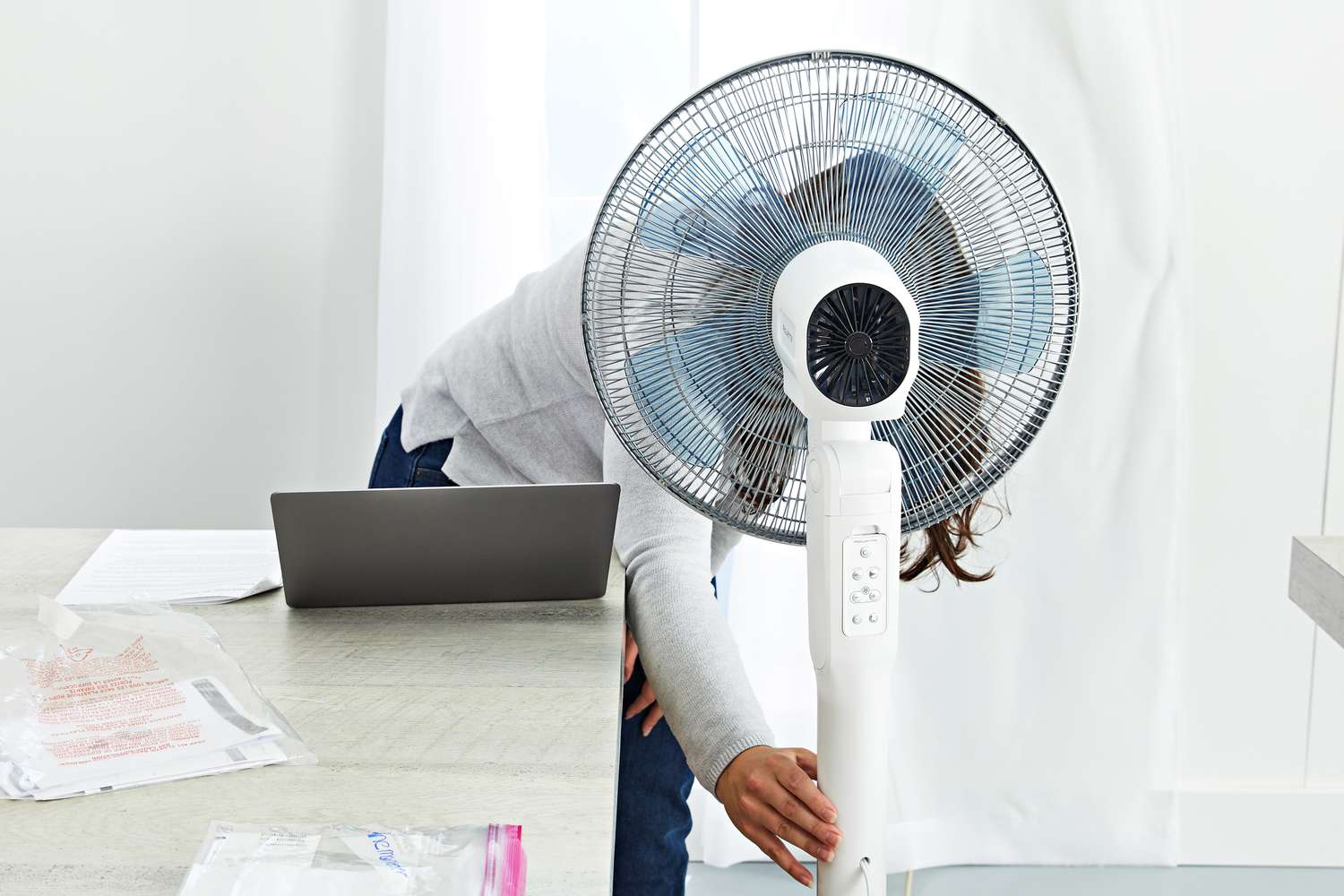

Articles
Why Wont My Fan Turn On
Modified: October 28, 2024
Having trouble with your fan not turning on? Check out our informative articles on how to troubleshoot and fix this common issue.
(Many of the links in this article redirect to a specific reviewed product. Your purchase of these products through affiliate links helps to generate commission for Storables.com, at no extra cost. Learn more)
Introduction
Having a fan that won’t turn on can be quite frustrating, especially during hot summer days or when you need proper ventilation in a room. If you’re facing this issue, you’re not alone. Many people encounter problems with their fans not functioning as expected. In this article, we will explore the possible reasons why your fan won’t turn on and provide troubleshooting steps to help you rectify the issue.
There could be several factors contributing to your fan’s failure. It’s important to understand these potential causes so you can identify and address the problem effectively. Let’s dive into some common reasons for fan failure.
Key Takeaways:
- Don’t sweat it! Troubleshooting your fan not turning on is a breeze with these steps. From power supply checks to fan motor testing, you’ll be back to enjoying a cool breeze in no time.
- Safety first! Prioritize safety when troubleshooting your fan. If in doubt, seek professional assistance to ensure a safe and effective resolution to the issue.
Read more: Why Wont My Washer Turn On
Possible Reasons for Fan Failure
When your fan refuses to turn on, there are a few potential culprits that you should investigate. Understanding these possibilities can help you narrow down the issue and find a solution. Here are some common reasons why your fan may not be working:
- Power Supply Issues: One of the most common reasons for a fan not turning on is a power supply problem. Check if the fan is properly connected to a power source and ensure that the outlet is working by plugging in another device.
- Faulty Fan Motor: The fan motor is responsible for powering the fan blades and generating airflow. Over time, the motor can wear out or become damaged, preventing the fan from functioning correctly. If you hear unusual noises coming from the motor or notice a burning smell, a faulty motor could be the culprit.
- Malfunctioning Thermostat: Some fans come with built-in thermostats that regulate their operation based on the room temperature. If the thermostat is defective or wrongly set, it may prevent the fan from turning on. Ensure that the thermostat is functioning correctly and set at an appropriate temperature.
- Broken Fan Belt: In fans with belts, a broken or loose belt can prevent the fan from spinning. Inspect the fan belt for any signs of damage, such as cracks or frays. If necessary, replace the belt following the manufacturer’s guidelines.
- Defective Fan Switch: The fan switch controls the fan’s on/off function. If the switch is faulty, it may not send the proper signal to the fan, causing it to remain inactive. Check the switch for any signs of damage or wear and consider replacing it if necessary.
These are just a few potential reasons why your fan may not be turning on. By understanding these possibilities, you can now proceed to troubleshoot and resolve the issue. Let’s explore some troubleshooting steps to help you get your fan up and running again.
Power Supply Issues
One of the first things to check when your fan fails to turn on is the power supply. It’s possible that there is an issue with the electrical connection or the power source itself. Here are some steps you can take to troubleshoot power supply issues:
- Check the power cord: Ensure that the power cord is securely plugged into the outlet and the fan. Sometimes, the cord can become loose or disconnected, causing the fan to lose power.
- Try a different outlet: Plug the fan into a different outlet to verify if the problem lies with the specific outlet. If the fan works in a different outlet, it indicates that there may be an issue with the previous power source.
- Test the outlet: Use a voltage tester to check if the outlet is providing power. If you don’t have a voltage tester, you can plug in another device to see if it powers on. If the outlet is not supplying electricity, you may need to call a professional electrician to address the issue.
- Check the circuit breaker: If the fan is connected to a circuit that has tripped, reset the circuit breaker by flipping it back to the “On” position. It’s possible that a power surge or overload caused the circuit to trip, leading to the fan not turning on.
By going through these steps, you can determine if the fan’s power supply is the cause of the issue. If you’ve ruled out power supply problems and the fan still doesn’t turn on, it’s time to move on to other potential reasons.
Faulty Fan Motor
If you’ve determined that power supply is not the issue, the next possibility to consider is a faulty fan motor. The fan motor is responsible for spinning the fan blades and generating airflow. Over time, the motor can wear out or become damaged, leading to the fan not turning on. Here are some steps to help you diagnose and address a faulty fan motor:
- Listen for unusual noises: Turn on the fan and listen for any unusual noises, such as grinding or buzzing sounds. These noises could indicate that the motor is damaged and needs to be replaced.
- Check for a burning smell: If you detect a burning smell coming from the fan or notice any signs of overheating, it’s likely that the motor is faulty. Unplug the fan immediately and discontinue use until the motor can be repaired or replaced.
- Inspect the motor visually: Carefully examine the fan motor for any visible signs of damage, such as frayed wires or burnt components. If you notice any abnormalities, it’s a strong indication that the motor needs to be replaced.
- Consult a professional: If you don’t have experience working with electrical components or if you’re unsure about the condition of the fan motor, it’s best to seek professional help. An electrician or a technician specialized in fan repairs can diagnose the issue and provide you with the necessary steps to fix or replace the faulty motor.
Remember, attempting to repair or replace the fan motor yourself can be dangerous and may result in further damage. It’s always best to consult a professional to ensure the proper and safe functioning of your fan.
If you’ve addressed the power supply and fan motor issues and your fan still won’t turn on, continue to the next section to explore another potential cause – a malfunctioning thermostat.
Malfunctioning Thermostat
A malfunctioning thermostat can also be the reason why your fan won’t turn on. Some fans come equipped with built-in thermostats that automatically regulate their operation based on room temperature. If the thermostat is not functioning correctly, it may prevent the fan from turning on when needed. Here’s what you can do to troubleshoot a malfunctioning thermostat:
- Check the thermostat settings: Ensure that the thermostat is set to the desired temperature and operating mode. Sometimes, accidental changes or incorrect settings can prevent the fan from turning on. Adjust the thermostat settings and see if the fan starts functioning.
- Test the thermostat operation: If the fan is still not turning on, you can use a multimeter to test the thermostat’s functionality. Set the multimeter to the ohms or resistance setting and measure the continuity of the thermostat wires. If there is no continuity or a significant fluctuation in the readings, it indicates a faulty or malfunctioning thermostat.
- Replace the thermostat: If you’ve determined that the thermostat is indeed malfunctioning, you may need to replace it. Consult the manufacturer’s instructions or seek professional help to ensure proper installation and compatibility with your fan model.
It is worth noting that not all fans have built-in thermostats. If your fan does not have a thermostat or if you’ve ruled out thermostat-related issues, move on to the next possible cause – a broken fan belt.
Read more: Why Wont My Dishwasher Turn On
Broken Fan Belt
If your fan has a belt-driven mechanism, a broken or loose fan belt could be the reason why it’s not turning on. The fan belt connects the motor to the fan blades, allowing them to rotate and create airflow. Over time, the belt can wear out, become damaged, or slip off its pulleys, causing the fan to malfunction. Here’s what you can do to address a broken fan belt:
- Visually inspect the fan belt: Carefully examine the fan belt for any signs of damage or wear. Look for cracks, frays, or any other indications of belt deterioration. If you notice any issues with the belt, it’s likely that it needs to be replaced.
- Tighten or reposition the fan belt: If the belt appears to be loose or slipped off its pulleys, you can try tightening it or repositioning it back onto the correct track. Follow the manufacturer’s guidelines or consult a professional for proper belt adjustment.
- Replace the fan belt: If the belt is severely damaged or cannot be properly repositioned, you will need to replace it. Refer to your fan’s instruction manual or contact the manufacturer for guidance on acquiring a compatible replacement belt.
It’s important to note that not all fans have belt-driven mechanisms. If your fan doesn’t have a fan belt or if addressing the fan belt issue didn’t resolve the problem, move on to the next potential cause – a defective fan switch.
Defective Fan Switch
The fan switch controls the on/off function of the fan. If the switch is defective or not functioning properly, it can prevent the fan from turning on. Here’s what you can do to troubleshoot a defective fan switch:
- Inspect the fan switch: Carefully examine the fan switch for any signs of damage, such as loose wires, burnt components, or worn-out buttons. If you notice any abnormalities, it’s likely that the switch needs to be replaced.
- Test the fan switch: If the switch appears to be visually intact, you can use a continuity tester or multimeter to test its function. Follow the manufacturer’s instructions to perform the test and check if there is continuity when the switch is turned on or off. If there is no continuity or inconsistent readings, it indicates a defective switch.
- Replace the fan switch: If the fan switch is indeed defective, you can either purchase a replacement switch from the manufacturer or consult a professional for assistance. Make sure to follow the proper installation instructions and ensure compatibility with your fan model.
By addressing a defective fan switch, you have covered all the potential reasons why your fan may not be turning on. However, before concluding that the issue is with the switch, it’s crucial to go through the troubleshooting steps provided earlier to rule out other possibilities.
Now that we have explored the possible reasons for fan failure and troubleshooting steps for each scenario, you should have a better understanding of why your fan won’t turn on and how to resolve the issue. Remember, if you are unsure or uncomfortable with DIY repairs, it’s always advisable to seek professional assistance to ensure safety and proper functionality of your fan.
Check the power source and the circuit breaker to ensure the fan is receiving power. If the power source is fine, the issue may be with the fan’s motor or wiring. Consider contacting a professional for further inspection and repair.
Troubleshooting Steps
If your fan won’t turn on, it’s essential to go through a series of troubleshooting steps to diagnose and resolve the issue. Here are some steps you can take:
- Checking the Power Supply: Verify that the fan is properly connected to a power source and ensure that the outlet is working by testing it with another device. If necessary, try plugging the fan into a different outlet to rule out any power supply issues.
- Testing the Fan Motor: Listen for any unusual noises coming from the fan motor and visually inspect it for any signs of damage. If you suspect a faulty motor, consider consulting a professional for diagnosis and repair.
- Verifying the Thermostat Functionality: Ensure that the thermostat settings are correct and test the continuity of the thermostat wires using a multimeter. If the thermostat is malfunctioning, it may need to be replaced.
- Inspecting the Fan Belt: Carefully examine the fan belt for any signs of damage and ensure that it is properly tightened or positioned. If necessary, replace the belt following the manufacturer’s instructions.
- Examining the Fan Switch: Check the fan switch for any visual damage and test its function using a continuity tester or multimeter. If the switch is defective, it may need to be replaced.
By following these troubleshooting steps, you can identify the root cause of your fan’s failure to turn on and take appropriate action to resolve the issue. However, if the problem persists or if you are unsure about performing any repairs yourself, it is always advisable to seek the assistance of a professional electrician or technician.
Remember, safety should always be a top priority when dealing with electrical appliances. It is important to turn off the power and follow proper procedures when inspecting or repairing your fan.
Now that you have a clear understanding of the troubleshooting steps, you can proceed with confidence in resolving the issue with your fan not turning on.
Checking the Power Supply
One of the first troubleshooting steps when your fan fails to turn on is to check the power supply. Power supply issues are a common cause of fan failure. Here’s what you can do:
- Inspect the power cord: Ensure that the power cord is securely plugged into both the fan and the electrical outlet. Over time, the cord may become loose or disconnected, interrupting the power supply to the fan.
- Test the outlet: Plug another device into the same outlet to verify if it is providing power. If the other device does not work, the problem may lie with the outlet itself. In this case, you may need to contact an electrician to address the electrical issue.
- Try a different outlet: If the outlet is working correctly, but the fan still won’t turn on, try plugging the fan into a different outlet. This will help determine whether the issue is with the specific outlet or the fan itself.
- Check the circuit breaker: If the fan is connected to a circuit that has tripped, reset the circuit breaker by turning it off and then back on. A power surge or overload may have caused the circuit breaker to trip, cutting off power to the fan.
By going through these steps, you can determine if the fan’s power supply is the cause of the issue. If the power supply is not the problem and the fan still does not turn on, then it’s time to move on to the next troubleshooting step.
Remember to always prioritize safety when dealing with electrical appliances. If you’re unsure or uncomfortable with working on electrical components, it’s best to consult a professional electrician for assistance.
Now that we have checked the power supply, we can proceed to the next troubleshooting step to determine the cause of the fan’s failure to turn on.
Read more: Why Wont My Maytag Washer Turn On
Testing the Fan Motor
If the power supply is not the issue, the next step in troubleshooting a fan that won’t turn on is to test the fan motor. The fan motor is responsible for powering the fan blades and generating airflow. Here’s how you can test the fan motor:
- Listen for unusual noises: Turn on the fan and listen for any unusual noises coming from the motor. Grinding, buzzing, or humming sounds could indicate a faulty motor. If you notice any of these noises, it may be a sign that the motor needs to be replaced.
- Visual inspection: Carefully examine the fan motor for any visible signs of damage, such as burnt wires, loose connections, or damaged components. If you notice any abnormalities, it’s a strong indication that the motor is faulty and needs attention.
- Motor resistance test: You can use a multimeter set to the resistance or ohms setting to test the motor. Disconnect the fan from the power source and locate the motor’s wiring. Place the multimeter leads on the motor’s terminals and check for a reading within the manufacturer’s specified range. If the reading is significantly outside the normal range or if there is no reading at all, it suggests a faulty motor.
- Consult a professional: If you’re not comfortable or experienced in working with electrical components, it’s best to consult a professional for motor diagnostic and repair. An electrician or technician specialized in fan repairs can accurately assess the motor’s condition and provide the necessary steps to fix or replace it.
By testing the fan motor, you can determine if it is the cause of the fan’s failure to turn on. If the motor is found to be faulty, it will need to be repaired or replaced to restore the fan’s functionality. However, if the motor is not the issue, continue with the next troubleshooting step.
Keep in mind that working with electrical components can be dangerous if you’re not trained or experienced. It’s always best to prioritize safety and consult a professional if you have any doubts or concerns.
Now that we have tested the fan motor, we can move on to the next step in troubleshooting – verifying the functionality of the thermostat.
Verifying the Thermostat Functionality
If the fan motor is not the issue, the next step in troubleshooting a fan that won’t turn on is to verify the functionality of the thermostat. Some fans have built-in thermostats that regulate their operation based on room temperature. Here’s how you can verify the functionality of the thermostat:
- Check the thermostat settings: Ensure that the thermostat settings are correct and set to the desired temperature. Make sure it is not set too low or too high that it prevents the fan from turning on.
- Test the continuity: Use a multimeter set to the continuity or ohms setting to test the thermostat’s functionality. Disconnect the fan from the power source and locate the thermostat wiring. Place the multimeter leads on the thermostat terminals and check for continuity or a specific resistance value. If there is no continuity or the resistance reading is significantly different from what the manufacturer specifies, the thermostat may be faulty.
- Consider a replacement: If you suspect a malfunctioning thermostat, it may need to be replaced. Refer to the manufacturer’s instructions or consult a professional for assistance in acquiring a compatible replacement thermostat. Ensure that you follow the proper installation procedures to ensure its functionality.
Verifying the functionality of the thermostat is crucial, especially if your fan is equipped with one. A malfunctioning or incorrectly set thermostat can prevent the fan from turning on when needed. If the thermostat is found to be the issue, replacing it should restore proper functioning of the fan. However, if the thermostat is functioning correctly, proceed to the next step in troubleshooting.
Remember to prioritize safety and turn off the power before conducting any tests or making any adjustments. If you’re uncertain or uncomfortable working with electrical components, it’s advisable to seek the assistance of a professional.
Now that we have verified the functionality of the thermostat, we can move on to the next troubleshooting step – inspecting the fan belt (if applicable).
Inspecting the Fan Belt
If your fan has a belt-driven mechanism, a broken or loose fan belt can cause it to not turn on. The fan belt connects the motor to the fan blades, allowing them to rotate and generate airflow. Here’s how you can inspect the fan belt:
- Visual inspection: Carefully examine the fan belt for any signs of damage, such as cracks, frays, or excessive wear. If you notice any abnormalities or if the belt appears to be broken, it will need to be replaced.
- Check for proper tension: A fan belt should have the proper tension to ensure smooth operation. Gently press on the belt to check its tension. It should not be too loose or too tight. If the belt is loose, follow the manufacturer’s instructions to adjust the tension. If it feels overly tight, it may be causing strain on the motor and should be adjusted or replaced.
- Replace the belt (if necessary): If the fan belt is damaged or too worn out, it will need to be replaced. Refer to the fan’s instruction manual or contact the manufacturer for guidance on acquiring a compatible replacement belt. Ensure that you follow the manufacturer’s instructions for proper installation.
It’s important to note that not all fans have belt-driven mechanisms. If your fan does not have a fan belt or if inspecting and adjusting the belt did not resolve the issue, proceed to the next troubleshooting step.
Remember to always prioritize safety and turn off the power before inspecting or replacing the fan belt. If you’re uncertain or uncomfortable with this process, it’s recommended to seek the assistance of a professional technician or expert.
Now that we have inspected the fan belt, let’s move on to the next step – examining the fan switch.
Examining the Fan Switch
The fan switch controls the on/off function of the fan. If the fan switch is defective or not functioning correctly, it can prevent the fan from turning on. Here’s how you can examine the fan switch:
- Visual inspection: Carefully examine the fan switch for any visible signs of damage or wear. Look for loose wires, burnt components, or any other indications of switch malfunction. If you notice any abnormalities, it’s likely that the switch needs to be replaced.
- Test the fan switch: Use a continuity tester or a multimeter set to the continuity or ohms setting to test the function of the fan switch. Disconnect the fan from the power source and locate the switch wiring. Place the multimeter leads on the switch terminals and check for continuity or a specific resistance value. If there is no continuity or the reading is significantly different from what the manufacturer specifies, the switch may be defective.
- Replace the fan switch (if necessary): If the fan switch is found to be defective, it will need to be replaced. Consult the manufacturer’s instructions for acquiring a compatible replacement switch or seek the assistance of a professional to ensure proper installation.
Examining the fan switch is an essential step in troubleshooting a fan that won’t turn on. If the switch is faulty, replacing it should restore the fan’s functionality. However, if the switch is not the root cause of the issue, it may be necessary to explore other potential causes or seek professional assistance.
Always ensure that the power is turned off before examining or replacing the fan switch. If you’re uncertain or uncomfortable working with electrical components, it’s best to consult a professional electrician or technician.
Now that we have examined the fan switch, we have covered all the troubleshooting steps. Let’s conclude our troubleshooting process.
Read more: Why Is My AC Fan Not Turning On
Conclusion
Dealing with a fan that won’t turn on can be frustrating, but by following the troubleshooting steps outlined in this article, you can identify and resolve the issue. We discussed several possible reasons for fan failure, including power supply issues, faulty fan motors, malfunctioning thermostats, broken fan belts, and defective fan switches.
Through a systematic approach, we examined each potential cause and provided steps to troubleshoot and address them. Checking the power supply, testing the fan motor, verifying the thermostat functionality, inspecting the fan belt, and examining the fan switch allowed us to pinpoint the root cause of the problem.
It’s important to prioritize safety throughout the troubleshooting process. Always turn off the power before inspecting or working on any electrical components. If you’re unsure or uncomfortable with electrical repairs, it’s recommended to consult a professional electrician or technician for assistance.
If the issue persists after going through the troubleshooting steps, it may indicate a more complex underlying problem. In such cases, it’s best to seek professional help to diagnose and repair the fan.
Remember, regular maintenance and cleaning can help prevent common issues and prolong the lifespan of your fan. Clean the fan blades, ensure proper lubrication of moving parts (if applicable), and address any issues promptly to avoid extensive damage.
We hope that this article has provided you with the necessary knowledge and guidance to troubleshoot and resolve issues with your fan that won’t turn on. Stay cool, and enjoy the comfort and functionality of your fan once again!
Frequently Asked Questions about Why Wont My Fan Turn On
Was this page helpful?
At Storables.com, we guarantee accurate and reliable information. Our content, validated by Expert Board Contributors, is crafted following stringent Editorial Policies. We're committed to providing you with well-researched, expert-backed insights for all your informational needs.

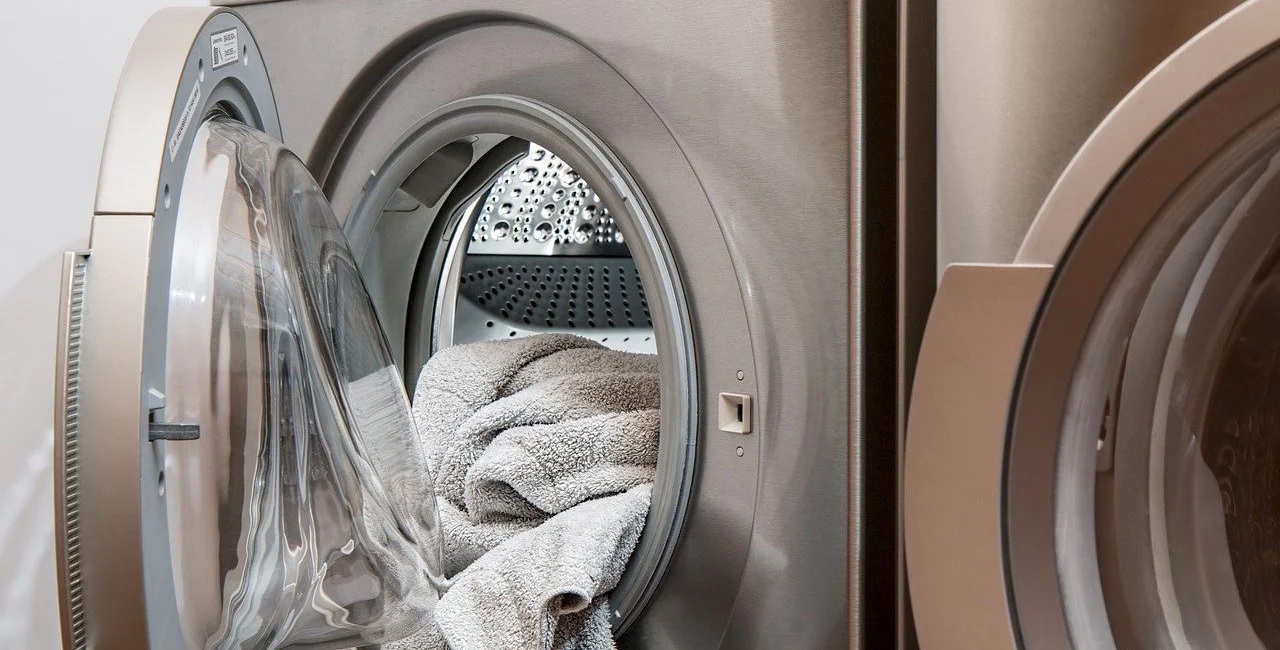
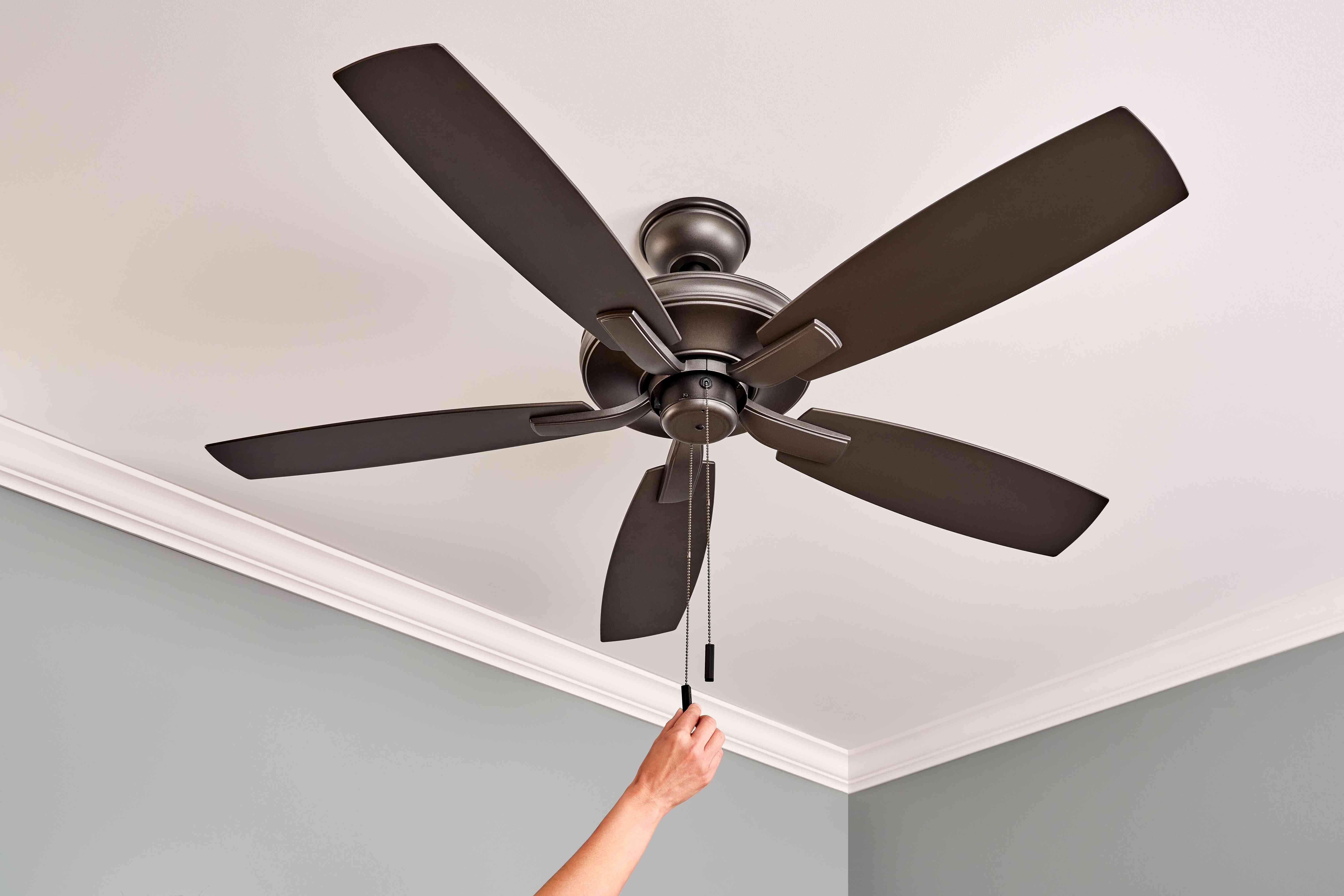

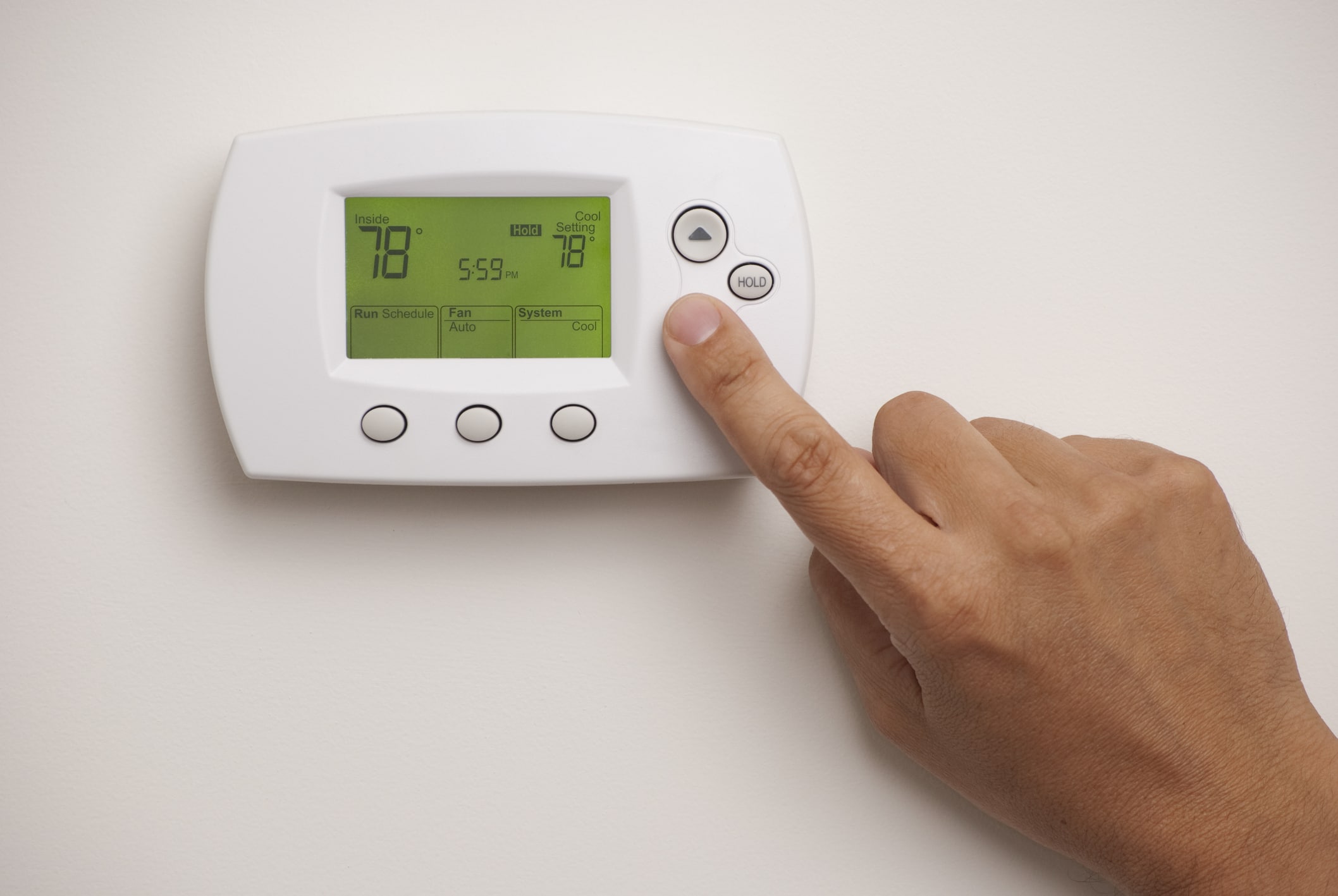
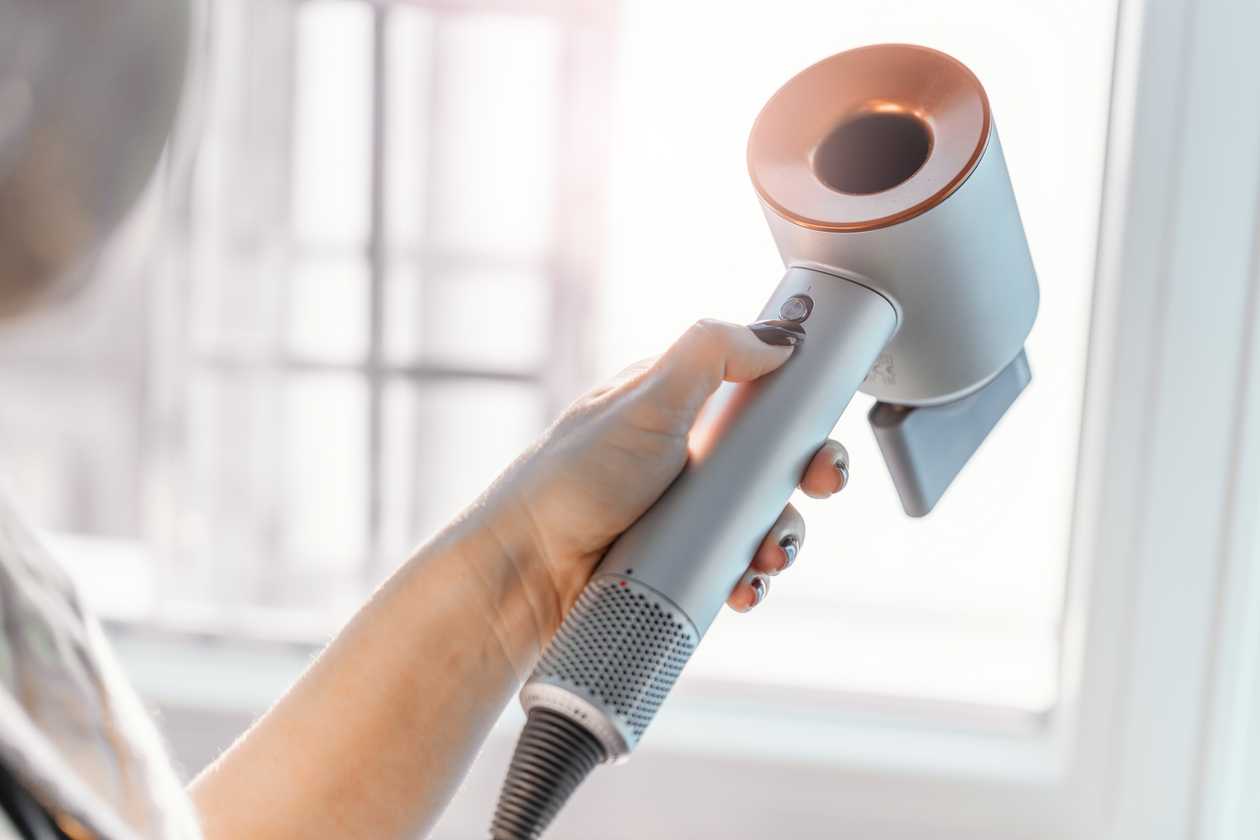

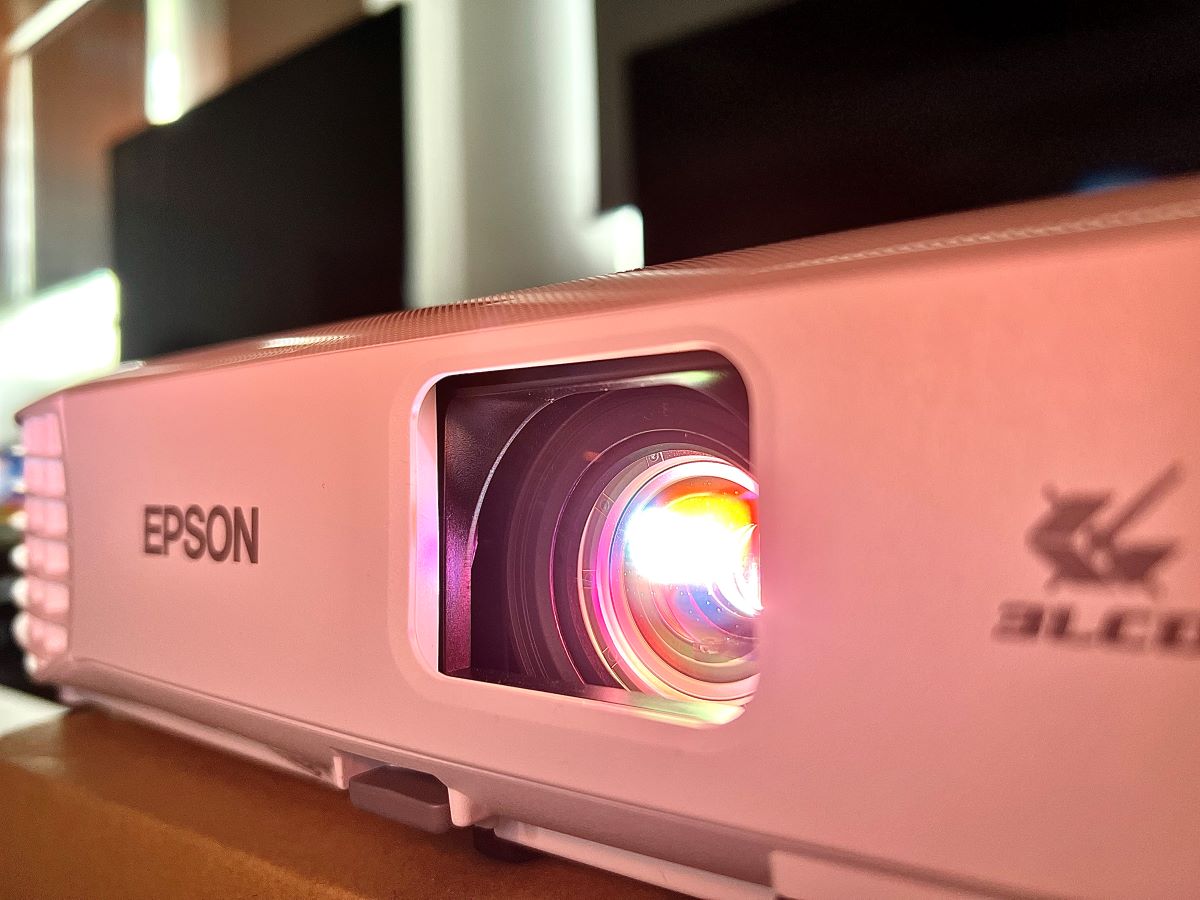
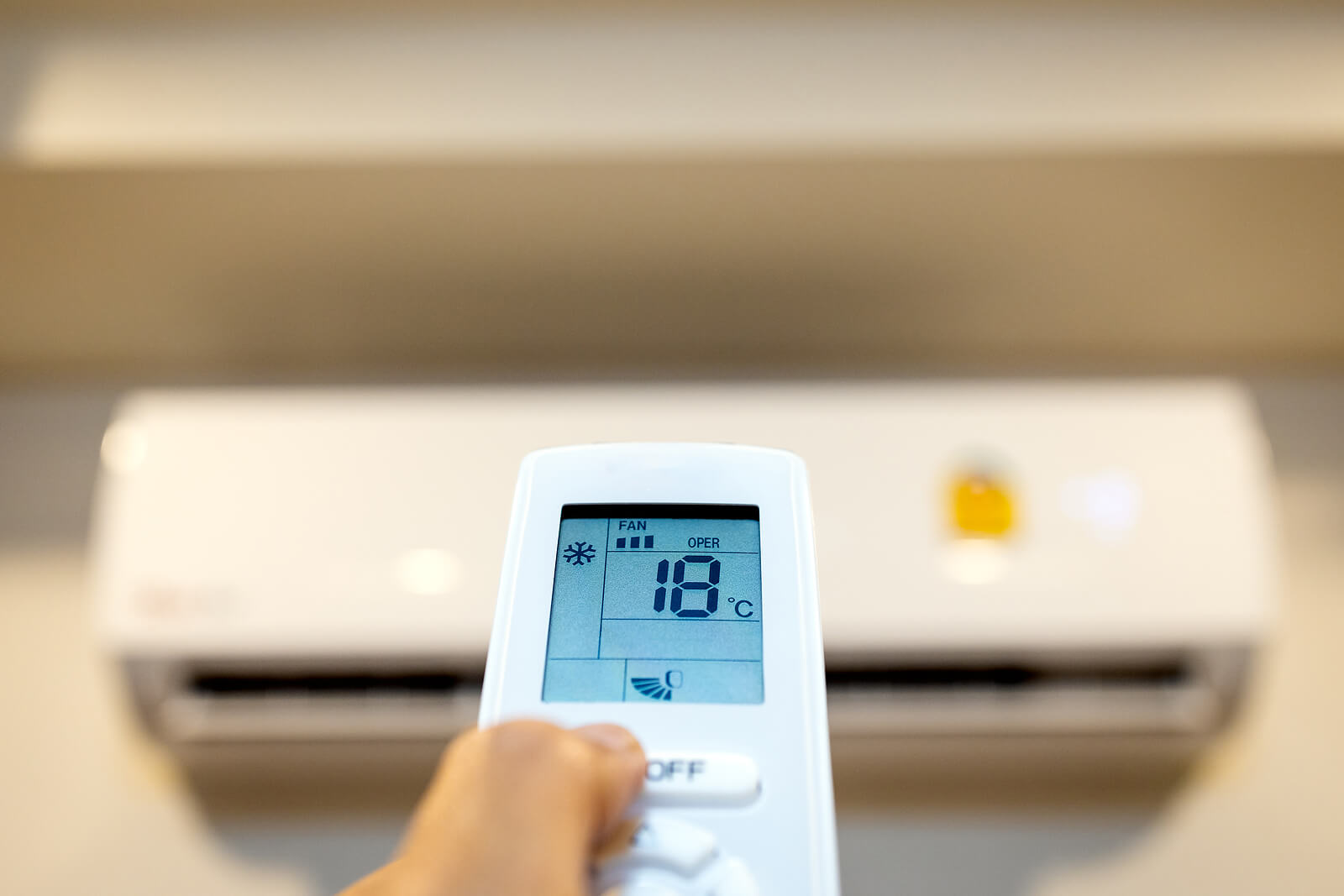
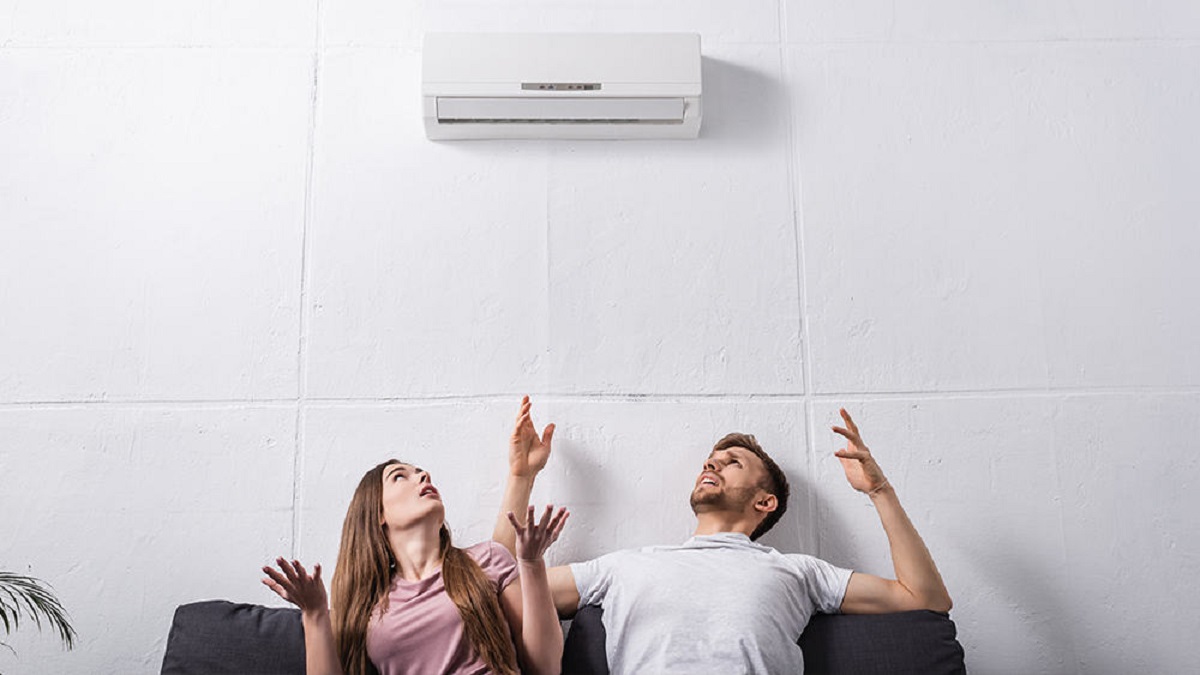
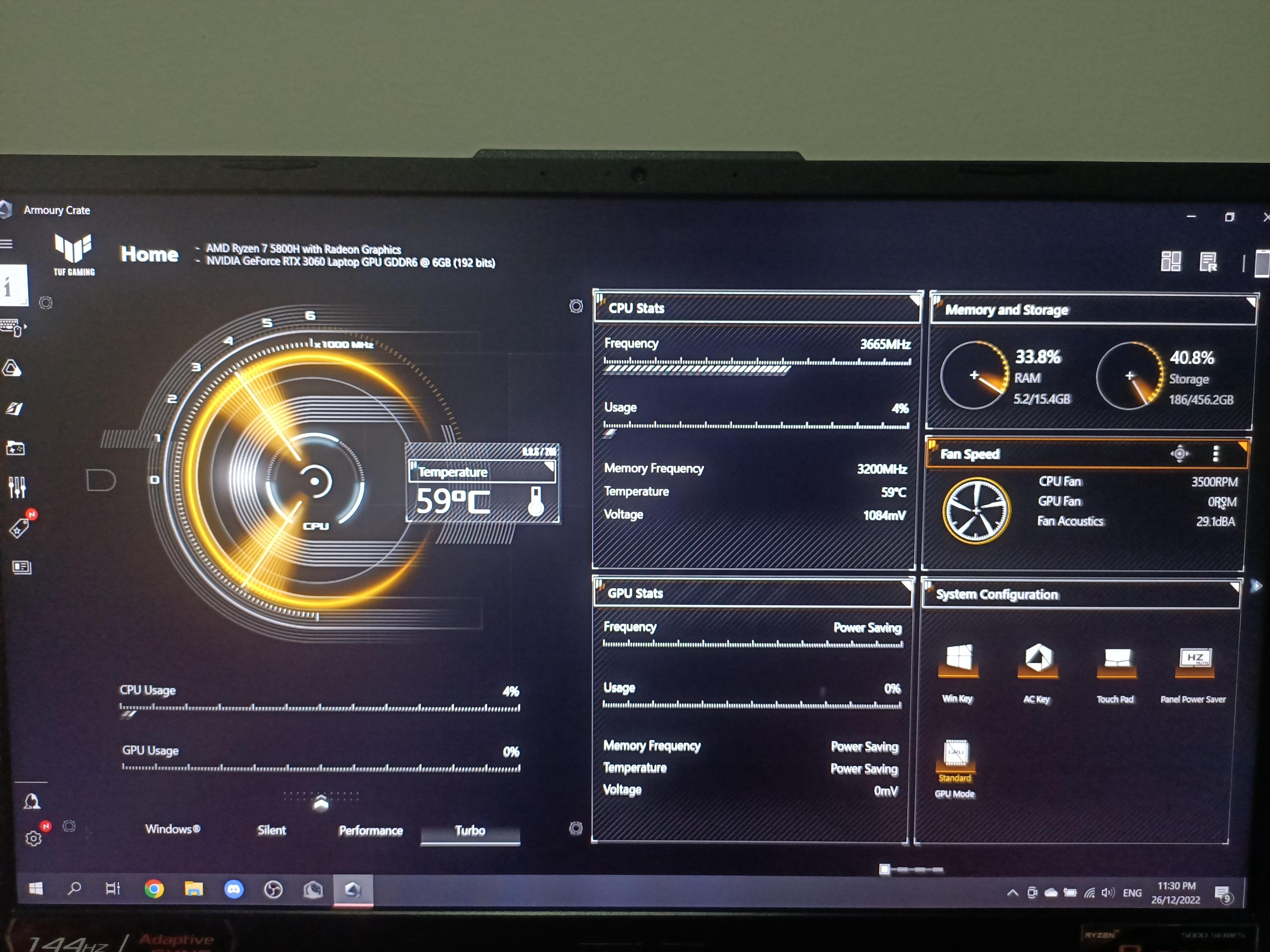
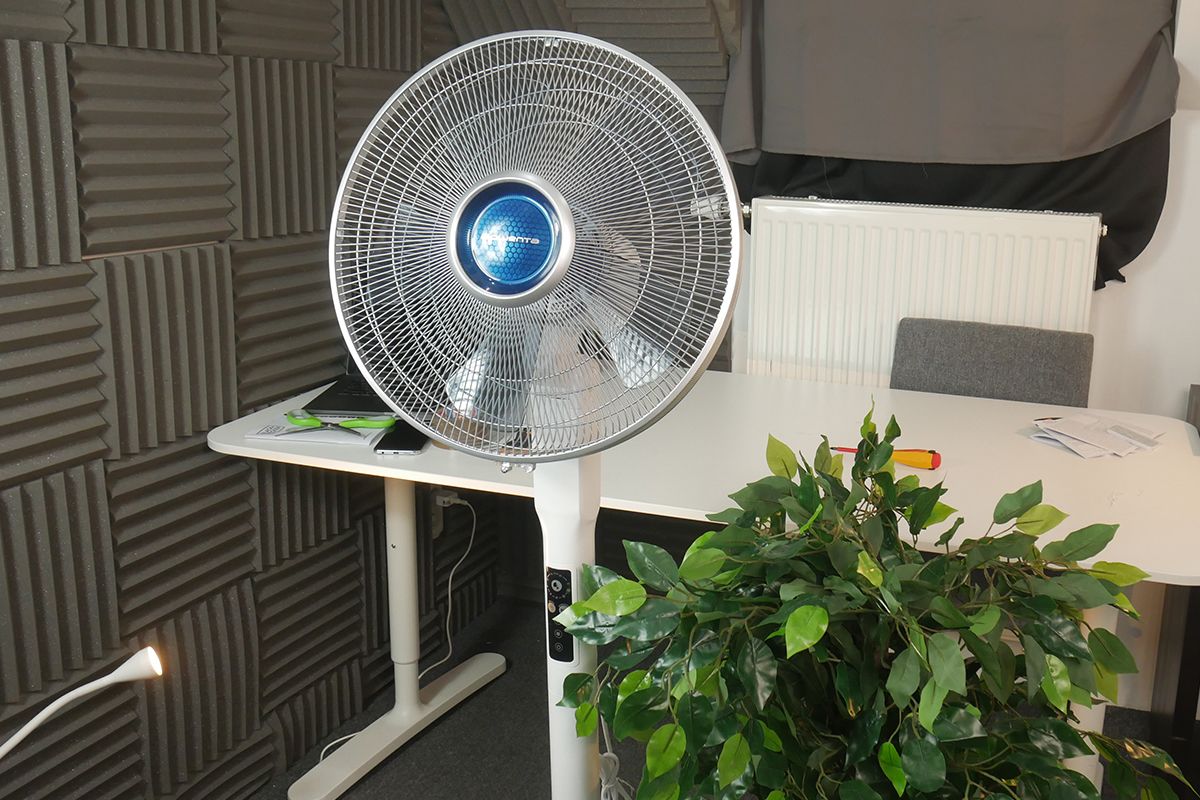

0 thoughts on “Why Wont My Fan Turn On”